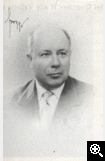|
|
|
| |
| |
Cesare Bairati
| |
 |
|
was born on 13th January 1910 and died on 31st May 1974 in Turin. Bairati graduated in Architecture in 1937. Since 1940 he co-operated with Giovanni Muzio, then full professor of Architectonic Composition, succeeding to him in 1948. In this period, he published La simmetria dinamica (The dynamic simmetry), a text on Hambidge's theory and some essays on the history of architecture.
Bairati was one of the founders of the "Pagano's Group", where he was appointed as a director in 1955. In the same year he became professor of Constructive Elements at the faculty of Architecture of Turin, deepening the studies on technological components, on organisational problems of building and publishing different essays among which "La coordination modulaire dans l'industrie", "Prefabbricazione in edilizia" e "Elementi costruttivi: il rustico della costruzione" (The modular coordination in industry, The Prefabrication in building and Constructive elements: the construction rustic).
Bairati became member of Uni and worked as a consultant in the Istituto Case Popolari (Institute for Popular Houses) and Gescal.
Later on, his interests were addressed to the field of the territory organisation. Bairati led the Institute of Territorial and Designing Organisation, a point of convergence between urbanistic and compositive, technical and organisational, sociological and economical subjects.
In 1969 he became a full professor of Urbanistics. In this period he published other essays, among which Metodologia per il piano e per le ricerche (Methodology for the plane and other researched).
He was a representative of Italian faculties of Architecture within the National Council of Researches. Bairati moves contributions specific for urbanistics and building to the fuild of Engineering. He coupled his didactic activity with the free lancer profession, partcipating to some competitions of architecture and designing the new head office of the Politecnico di Torino. In addition he designed and led the implementation in Turin of the Quarter H in the Vallette and Quarter E17 of 167 at the Falchera.
|
| |
|
|

